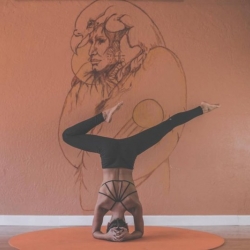Art Therapy for Relapse Prevention
For many decades, drug and alcohol rehab involved talk therapy exclusively. Clients would be asked questions and communicate with their therapist, and maybe find the underlying causes of their addiction and some coping strategies.
Today, those methods have evolved to include holistic programs that enable emotional understanding and improvement in other ways, like art therapy for relapse prevention.
Ava Recovery is a luxury drug and alcohol rehab center in Austin.
What is Art Therapy in Addiction Recovery?
Art therapy is a form of evidence-based, holistic care that incorporates art into recovery. This can be used as a relapse prevention strategy or an accompaniment to talk therapy.
Art therapy is led by a qualified professional and can take place at recovery centers as part of an inpatient or outpatient program. Art therapy sessions can look very different depending on the program.
For example:
- Some clients might participate in guided painting classes
- Others might participate in drawing classes where they have an object in front of them that they draw in their unique way
- Other clients might do finger painting to relieve stress
- Sometimes, clients play with clay or paper mache
- Coloring books and watercolors can be used for simple guided activities
Motivation for Change
Several studies have found that participation in different forms of art therapy in recovery encourages motivation for change in clients who may have been ambivalent. Art therapy can provide a place where therapists match client attitudes, develop trust, and gently support lasting change.
These internal changes are essential to long-term sobriety because success has to come from within the client to be lasting. Art therapy for relapse prevention offers an outlet for controlling emotions, recognizing unnecessary stress, and staying motivated to change.
How Art Therapy in Recovery Works
Art therapy works in many ways, including:
- Tactile Engagement
- Emotional Expression
- Alternative Communication Strategy
- Stress Reduction
Tactile Engagement
The tactile engagement associated with art therapy in addiction recovery can be used to help manage strong emotions like frustration or stress.
These are all triggers that can lead to a relapse or inhibit communication and goal achievement during recovery. As clients transition back to normalcy after treatment, they can still face the risk of social stigma, escapist protocols, or victimization, which inhibit communication and self-awareness, but art can provide a medium to overcome these barriers.
Examples: Clients might use the creative process of tearing up pieces of construction paper and making collages with them to help deal with anxiety or frustration in a tactile manner.
Emotional Expression
It’s not uncommon for clients to need different avenues of emotional expression. Some might feel uncomfortable explaining how they feel. Others might not know how. When lacking the words to express how one is feeling, clients benefit from a form of treatment that encourages them to explore those feelings in a safe space.
Sometimes, clients use words to conceal how they are feeling, have problems expressing themselves, or are unaware of how they deeply feel. The process of images and art can facilitate better mood recognition, regulation, and expression, helping clients to overcome denial of emotions or avoidance in recovery.
Art therapy in addiction recovery offers a process that clients can find more easeful. The process of artistic expression can facilitate better communication.
Examples: Clients can participate in drawing or painting activities that allow them to sit with a therapist and show how they feel through art. This can help initiate a conversation about emotional states and aid clients as they process their emotions.
Stress Reduction
Art therapy can become a self-care tool in clients' toolboxes after treatment, something they can use again and again to manage stress.
Examples: When experiencing the start of a panic attack or other rising anxiety symptoms, clients can turn to simple coloring books. Coloring books provide a sense of control when other aspects of life seem out of control.
Art Therapy with Ava Recovery
If you are struggling with addiction, and you are looking for something other than strict talk therapy, or you want to try another form of expression, art therapy might be a better choice.
With Ava Recovery, we work hard to ensure our clients get personalized programs complete with the services that work best for their situation. So, if you have tried treatment before and had a relapse, holistic programs like art therapy for relapse prevention might be more suited to your circumstances. If, instead, you struggle to express your emotions and are looking for a creative outlet to do so, we can customize your residential art therapy services to meet those needs.
Overall, art therapy for addiction treatment has been very successful across the board. Art therapy is an effective and evidence-based treatment for substance abuse, and when you get treatment with Ava Recovery, we provide a safe space for creative expression.
Call our team today to learn more and tour our top-tier addiction treatment center in Texas..






